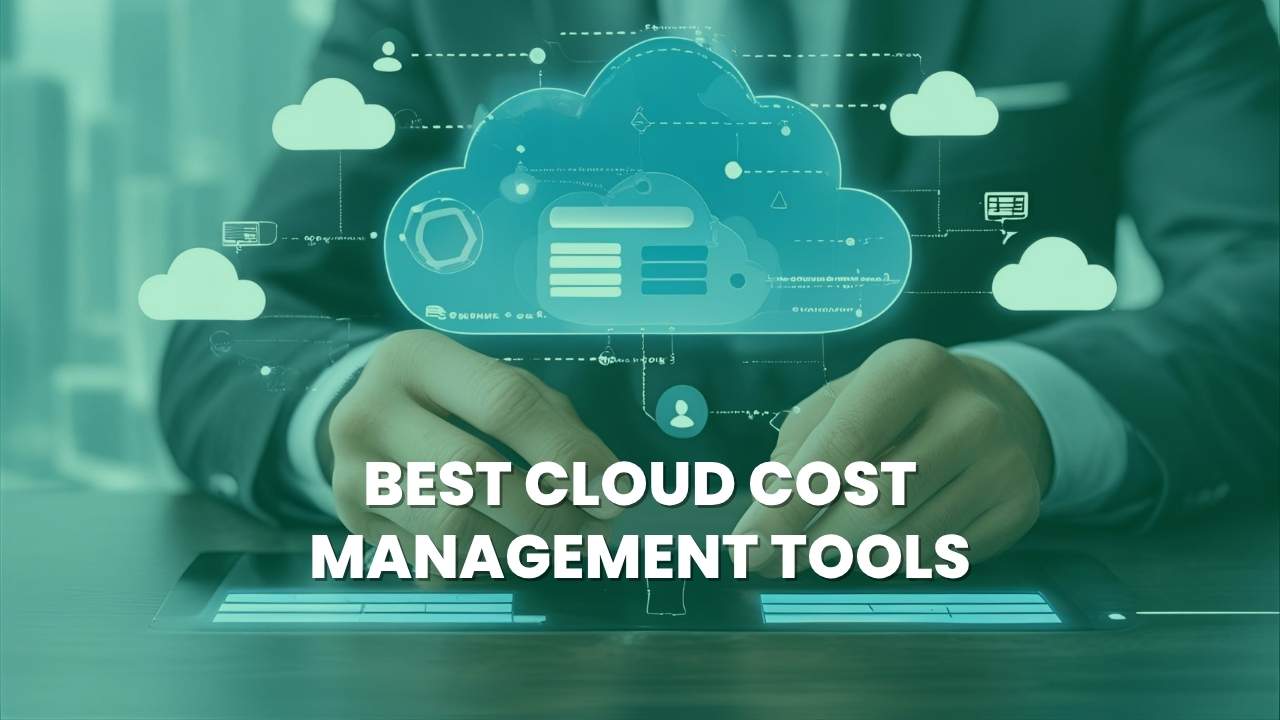As businesses migrate to cloud platforms like AWS, Azure, and Google Cloud at an increasing rate, tracking cloud spend has become more important than ever before. Spinning out of control because of uncontrolled usage, untapped capacity, and hidden utilization can result in millions of dollars wasted. That is where cloud spend management tools come into play.
The tools help you track, analyze, and maximize cloud usage, giving you cost transparency and cost savings. Whether you are a developer utilizing Kubernetes clusters, a finance team utilizing budgets, or an operations manager looking for better utilization of resources, cloud cost tools are crucial. We cover the top 15 cloud cost management tools ranked on usability, features, platform support, pricing, and ease of use in this article.
Criteria for Selecting the Best Cloud Cost Management Tools
A few of the key things to choose relevant cloud cost management tools to help businesses optimize cost savings, optimize efficiency, and manage multi-clouds.
- Multi-Cloud Support: Choose tools that can support all of the leading platforms, such as AWS, Azure, Google Cloud, etc, so that hybrid or multi-cloud can be managed with a single dashboard.
- Real-Time Visibility: Determine what products provide real-time cost visibility and alerting to allow teams to identify sudden spikes and respond in real time.
- Tagging & Cost Allocation: Budgeting and accountability demand detailed tagging for costing assignments by project, team, or department.
- Automation & Optimization: Enterprise solutions automate the recommendation or application of saving opportunities, such as rightsizing, removal of unused resources, or reserved instance upgrades.
- Budgeting & Forecasting: To be able to set a budget, forecast, and alert on the threshold achieved is good cloud cost management.
- Integration with DevOps Tools: CI/CD pipeline integration, monitoring tool integration, and infrastructure management tool integration create seamless flow and visibility.
- Customizable Dashboards & Reports: Tools require easy-to-consume, customizable dashboards and exportable reports easy to share insights to departments and stakeholders.
- Security & Compliance: Governance capabilities, with secure, compliant cloud deployment supported by industry standards.
- Ease of Use: Amazing features must be easy to use with easy learning for developers, finance teams, and business leaders.
- Scalability: The solution must be scalable with your business as a startup or enterprise without restricting performance or capability.
Comparison Between Best Cloud Cost Management Tools
Here’s a comparative table of the 15 top cloud cost management tools, detailing their key features, pricing models, primary use cases, and official websites:
| Tool | Key Features | Pricing Model | Primary Use Cases | Website |
| AWS Cost Explorer | Native AWS tool for cost tracking, usage analysis, and forecasting | Free for AWS users; request for pricing | AWS users needing built-in cost visibility | https://aws.amazon.com/aws-cost-management/aws-cost-explorer/ |
| Azure Cost Management + Billing | Budgeting, forecasting, and cost allocation across Azure and AWS | Free for Azure users; charges may apply for AWS | Azure users seeking integrated cost management | https://azure.microsoft.com/en-us/services/cost-management/ |
| Google Cloud Billing Reports | Detailed cost breakdowns, budget alerts, and AI-powered recommendations for GCP | Free for GCP users | GCP users requiring native billing insights | https://cloud.google.com/billing/docs/reports |
| CloudHealth by VMware | Multi-cloud cost visibility, optimization recommendations, and policy enforcement | Subscription-based; pricing varies by usage | Enterprises managing complex multi-cloud infrastructures | https://www.vmware.com/products/cloudhealth.html |
| CloudCheckr | Cost optimization, security compliance, and workload automation across AWS, Azure, and GCP | Subscription-based; tailored to customer needs | Businesses seeking comprehensive cloud governance | https://www.cloudcheckr.com/ |
| Spot by NetApp | Automated workload optimization, spot instance management, and reserved instance planning | Custom pricing based on usage | Organizations aiming to maximize savings through automation | https://spot.io/ |
| Apptio Cloudability | Multi-cloud cost management, budgeting, forecasting, and FinOps integration | Subscription-based; pricing varies by organization size | Enterprises adopting FinOps practices for financial accountability | https://www.apptio.com/products/cloudability/ |
| Kubecost | Kubernetes-native cost monitoring, real-time insights, and optimization recommendations | Pricing based on Kubernetes environment size | Organizations heavily utilizing Kubernetes for container orchestration | https://kubecost.com/ |
| Harness Cloud Cost Management | AI-powered cost monitoring, anomaly detection, and CI/CD integration | Pricing varies; contact sales for details | DevOps teams seeking integrated cost management within CI/CD pipelines | https://www.harness.io/products/cloud-cost-management |
| nOps | Automated cost optimization, rightsizing, and compliance reporting for AWS | contact for pricing | AWS users aiming for continuous cost optimization and compliance | https://www.nops.io/ |
| CAST AI | Kubernetes cost optimization, automated scaling, and security compliance | Pay-as-you-go with a free tier available | Organizations running Kubernetes on multi-cloud environments | https://cast.ai/ |
| CloudZero | Real-time cost intelligence, unit cost analysis, and anomaly detection | Pricing varies; contact sales for details | SaaS companies focusing on cost per customer or feature | https://www.cloudzero.com/ |
| Densify | Machine learning-based resource optimization and workload analysis | Subscription-based; pricing varies by usage | Enterprises seeking automated resource optimization across cloud platforms | https://www.densify.com/ |
| Zesty | Dynamic resource scaling, commitment management, and automated cost optimization for AWS | Subscription-based; pricing varies by usage | Businesses aiming to automate AWS cost savings without manual intervention | https://zesty.co/ |
| Economize | Simplified cost monitoring, budgeting, and savings recommendations for startups | Pricing varies; contact sales for details | Startups and small teams needing straightforward cloud cost management | https://economize.cloud/ |
List of 15 Best Cost Management Tools
1. AWS Cost Explorer
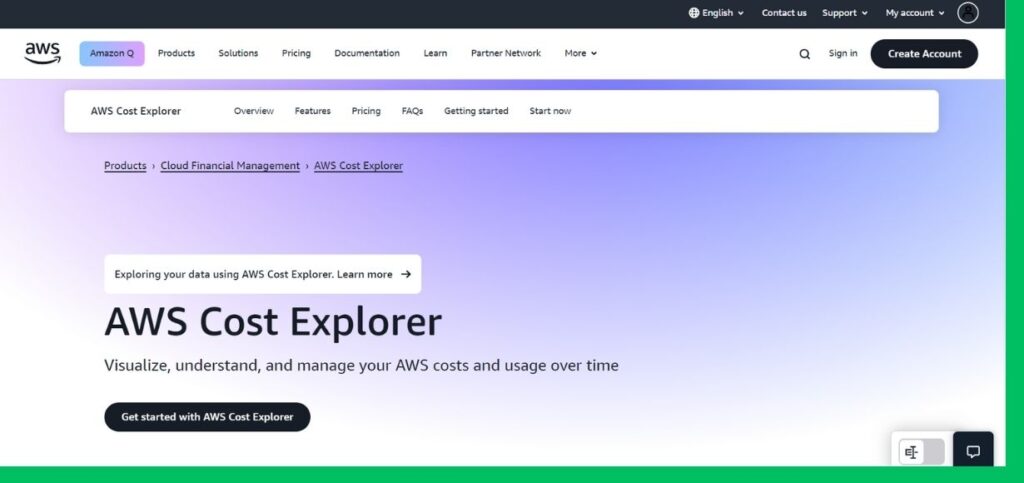
AWS Cost Explorer is the native tool for Amazon that allows users to see, comprehend, and control AWS cloud expenses. It offers interactive reports and filter options to see usage patterns and cost trends across time. The user can observe data for 12 months at most and can also predict the amount spent in the future. It also facilitates cost allocation tags and linked accounts for detailed reporting. AWS Cost Explorer is best suited for budgeting teams working within AWS, providing actionable insights to improve resource utilization without requiring third-party tools.
Key Features:
- Usage reports by service
- Cost forecasting
- Filtering by tags and accounts
- Reservation utilization tracking
Pros:
- Integrated directly into AWS
- Free to use
Cons:
- Limited to AWS only
- Lacks advanced recommendations
Pricing:
Free with AWS
Who Should Use It:
AWS users needing basic cost insights
2. Azure Cost Management + Billing
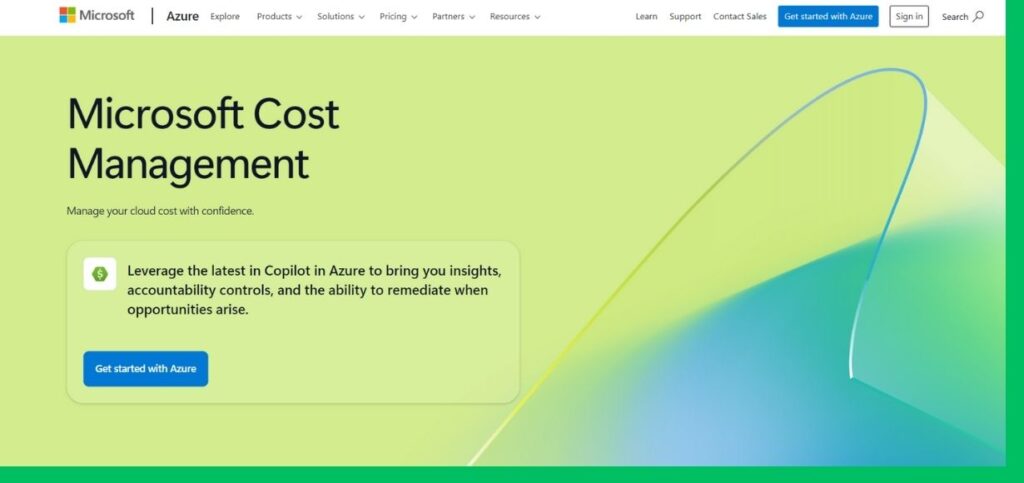
Azure Cost Management + Billing is Microsoft’s native solution for monitoring and optimizing costs on Azure and AWS. It allows budgeting, forecasting, and cost attribution with rich usage reports and visual dashboards. The system allows budget threshold alerts, views customizable by department or project, and anomaly detection. Integrated into Microsoft services, it’s particularly valuable for enterprises already committed to Azure. It streamlines financial management and provides resource efficiency, enabling organizations to manage multi-cloud costs more effectively without further third-party tools or platforms.
Key Features:
- Budget alerts
- Forecasting tools
- Cost analysis reports
- Integration with Power BI
Pros:
- Free for Azure users
- Supports AWS too
Cons:
- Steep learning curve
- Limited multi-cloud support
Pricing:
Free for Azure; charges apply for AWS monitoring
Who Should Use It:
Azure users managing large infrastructures
3. Google Cloud Billing Reports
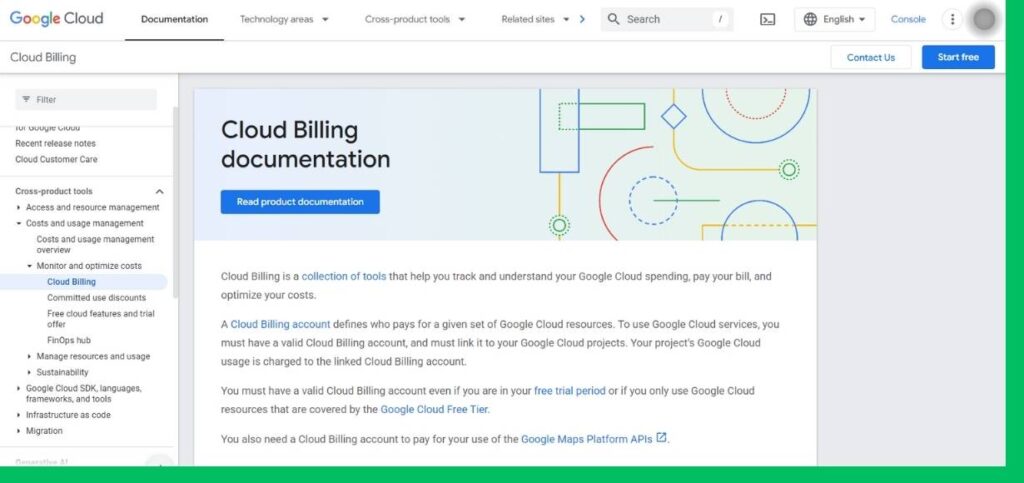
Google Cloud Billing Reports provide an in-built dashboard to track spend, trends, and budget setup within GCP. Costs are visible by service, project, SKU, or labels to help users get minute visibility. It supports email-based or Pub/Sub-based budget alerting and provides integration with BigQuery for analytics. It can be of good use for finance teams and developers who manage the GCP infrastructure, providing them with a no-cost option for expense optimization. The minimalistic interface and fine-grained control make it best suited for startups to enterprises leveraging Google Cloud.
Key Features:
- Budget alerts and caps
- Charts and trend analysis
- Export to BigQuery
- Integration with Looker Studio
Pros:
- Deep GCP integration
- Customizable dashboards
Cons:
- Only for GCP
- Basic optimization tips
Pricing:
Free with Google Cloud
Who Should Use It:
GCP users needing simple yet effective budgeting
4. CloudHealth by VMware

VMware CloudHealth is a powerful AWS, Azure, GCP, and other cloud provider cloud cost management platform. It offers budgeting, cost analysis, forecasting, and cost governance features that help organizations contain cloud costs. It helps enforce fiscal responsibility within organizations with its policy tuning, reporting, and resource optimization analysis. Its feature for managing compliance and security task work is favorable for regulated organizations. Built to scale into large, multi-cloud deployments, CloudHealth enables businesses to maximize performance, unify cloud spend by business intent and purpose, and maximize accountability.
Key Features:
- Cost and usage reporting
- Policy enforcement
- Rightsizing and reserved instance planning
- Multi-cloud visibility
Pros:
- Detailed reports
- Strong governance tools
Cons:
- Pricey for small teams
- Requires onboarding
Pricing:
Custom pricing
Who Should Use It:
Enterprises with complex multi-cloud environments
5. CloudCheckr
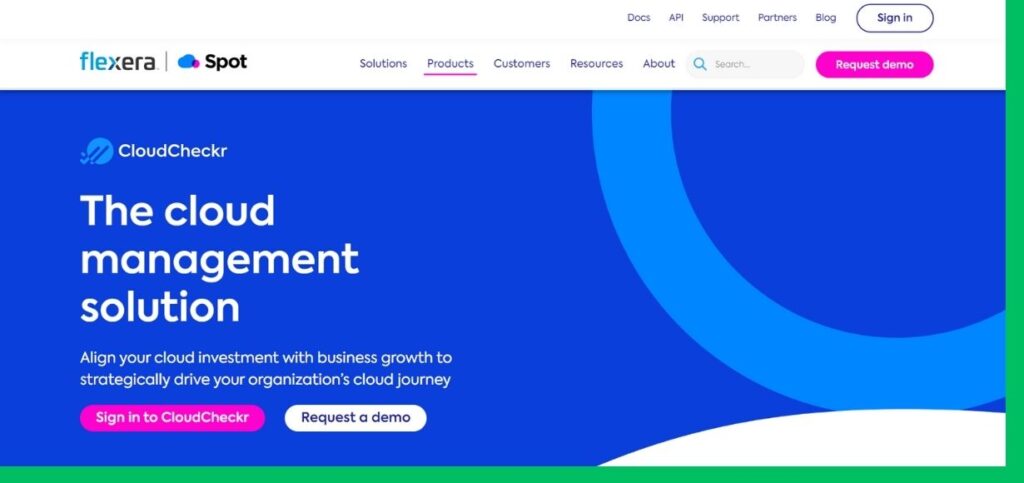
CloudCheckr is a unified cloud optimization solution with cost management, security, and compliance for AWS, Azure, and GCP. It offers cost savings suggestions, billing analysis with automation, and chargeback to facilitate efficient financial management. CloudCheckr enables the identification of idle resources, reserved instance optimization, and governance policy enforcement. Its detailed reports assist multi-team collaboration and audit preparedness. Built for business, government, and MSPs, it provides strong visibility and control of cloud environments to ensure cost-effectiveness and operational compliance.
Key Features:
- Resource optimization
- Compliance checks
- Security monitoring
- Budget tracking
Pros:
- Highly detailed reports
- Strong security features
Cons:
- Complex UI
- Expensive for startups
Pricing:
Custom pricing
Who Should Use It:
Enterprises focused on compliance and security
Read more articles for tools:
- Best Service Desk Tools
- Best Keyword Research Tools
- Best LinkedIn Marketing Tools
- Best Email Tracking Tools
6. Spot by NetApp

Spot by NetApp automates cloud infrastructure for cost and performance based on AI and automation. Spot watches cloud workloads in real-time and suggests and enacts cost-saving methods such as right-sizing, usage of spot instances, and automation of workloads. Supported by AWS, Azure, and GCP, Spot reduces costs without loss of availability. It’s ideal for DevOps operators who have to preserve performance under changing demand. With the help of instruments such as Ocean and Eco, Spot allows intelligent scaling and resource provision and is therefore well-suited to cloud-native organizations.
Key Features:
- Intelligent workload automation
- Reserved instance optimization
- Real-time monitoring
- Kubernetes integration
Pros:
- Great for DevOps
- Strong automation features
Cons:
- Can be overwhelming
- Custom pricing
Pricing:
Custom
Who Should Use It:
DevOps teams and growing SaaS businesses
7. Apptio Cloudability
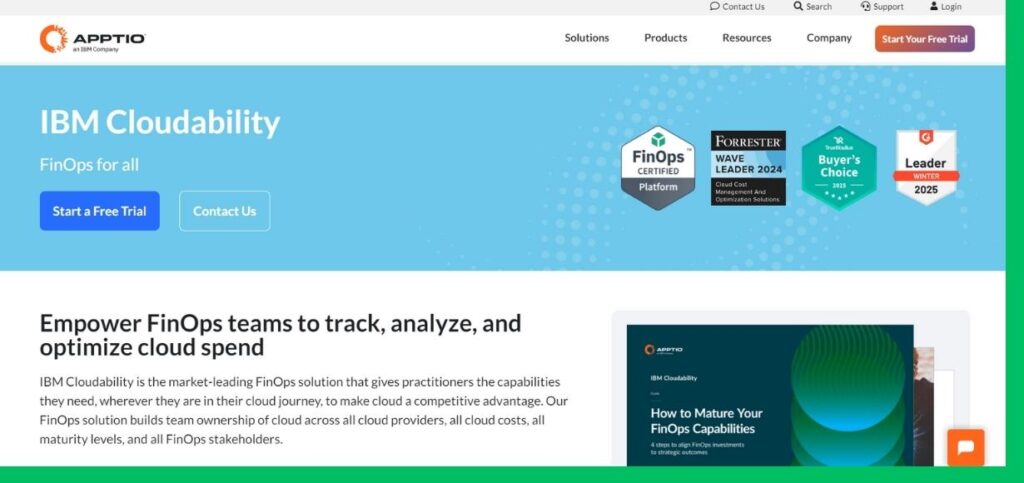
Apptio Cloudability is a FinOps product that funds cloud account activity for GCP, Azure, and AWS. Cloudability provides visibility into real-time costs, budgeting, and forecasting for matching IT expenditure to business objectives. Cloudability has chargeback, showback, and unit economics capabilities, making it an appropriate solution for hybrid cloud complexity in an enterprise. Its analytics capability identifies potential cost savings and helps make strategic decisions. Backed by the financial expertise of Apptio, the solution allows organizations to optimize cloud investments and drive value across departments.
Key Features:
- Financial reporting
- Department-level budgeting
- Tagging and chargeback
- Forecasting tools
Pros:
- Finance-friendly
- Supports multiple clouds
Cons:
- Not developer-centric
- Pricing on request
Pricing:
Custom
Who Should Use It:
Finance teams and FinOps professionals
8. Kubecost

Kubecost is precisely built for monitoring and managing Kubernetes-related cloud expenses. It exposes resource usage per namespace, pod, service, and deployment, and teams get to know exactly where money is being spent. With integration support for existing Kubernetes environments, Kubecost renders real-time info, budget warnings, and expense allocation for multi-tenant situations. Ideal for engineering and DevOps teams, it supports AWS, GCP, Azure, and on-prem Kubernetes environments. Kubecost helps users make informed infrastructure choices based on data, minimize waste, and streamline containerized workload optimization.
Key Features:
- Cost allocation by namespace
- Real-time cost tracking
- Alerts and reports
- Cluster efficiency insights
Pros:
- Kubernetes native
- Free tier available
Cons:
- Limited to Kubernetes
- UI could be better
Pricing:
Free & paid plans
Who Should Use It:
DevOps teams using Kubernetes
9. Harness Cloud Cost Management
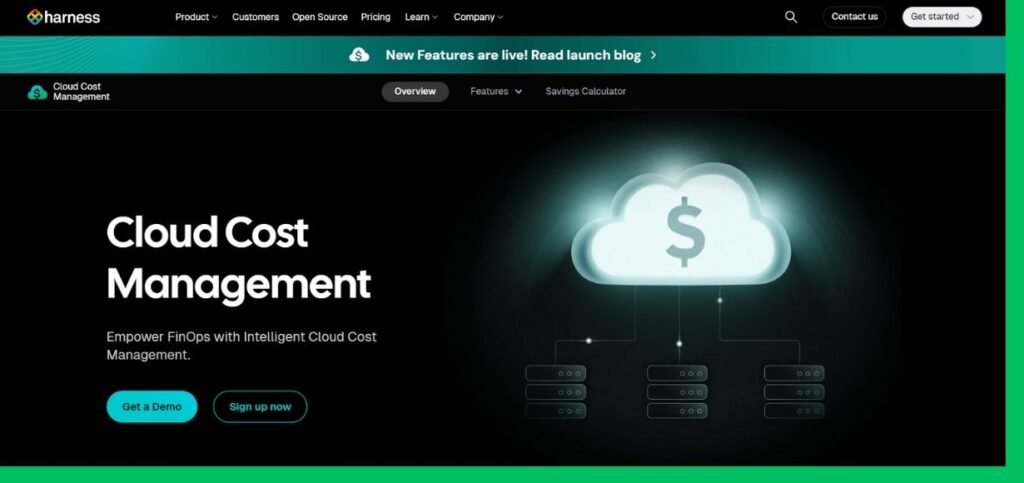
Harness Cloud Cost Management is a cloud-native solution that offers real-time cost tracking and AI-driven cost-saving recommendations for AWS, Azure, and GCP. It identifies underutilized resources, rightsizes workloads, and enables smart scaling to keep cloud expenses in line. With detailed visibility and customizable dashboards, teams can easily spot cost anomalies and expenditure trends. Integrated seamlessly into CI/CD pipelines, it is the perfect fit for DevOps and FinOps partnerships. Harness enables businesses to maximize efficiency without compromising performance in modern cloud-native environments.
Key Features:
- Real-time dashboards
- AI-driven savings suggestions
- Anomaly detection
- Budget controls
Pros:
- Strong automation
- Modern UI
Cons:
- Premium pricing
- Learning curve
Pricing:
Custom
Who Should Use It:
AI-driven teams, tech startups
10. nOps
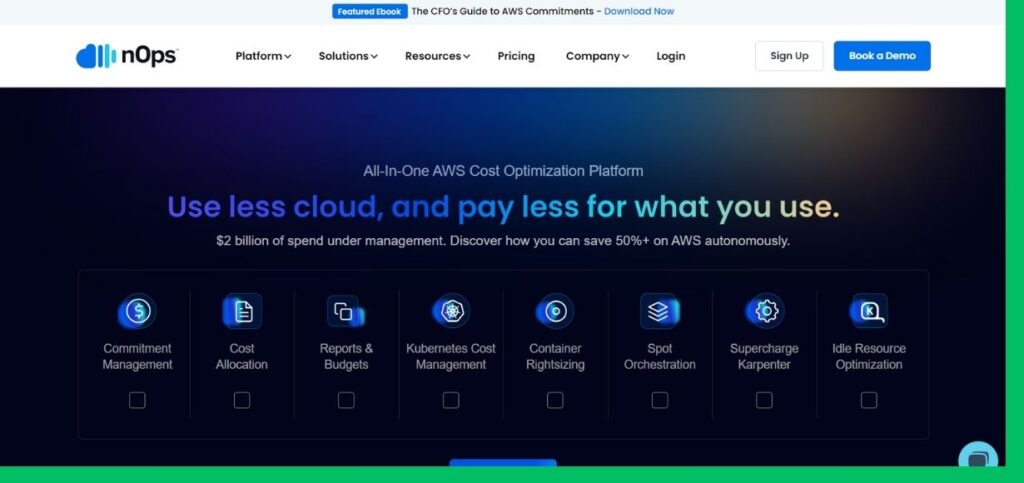
nOps is an AWS cloud management service that focuses on cost optimization, security, compliance, and operation excellence. It continuously identifies cost anomalies, idle capacities, and projected savings to support the AWS Well-Architected Framework. Besides this, it has change monitoring, backup guarantee, and compliance reporting. nOps is best for companies that are interested in optimizing AWS operation but with a budget. With real-time insights and automated features, it enables constant cloud optimization for managed service providers, enterprises, and startups.
Key Features:
- Budgeting and forecasting
- Rightsizing suggestions
- Change management
- Real-time monitoring
Pros:
- Great AWS support
- Easy setup
Cons:
- AWS only
- Fewer integrations
Pricing:
Custom
Who Should Use It:
AWS-centric teams
11. CAST AI
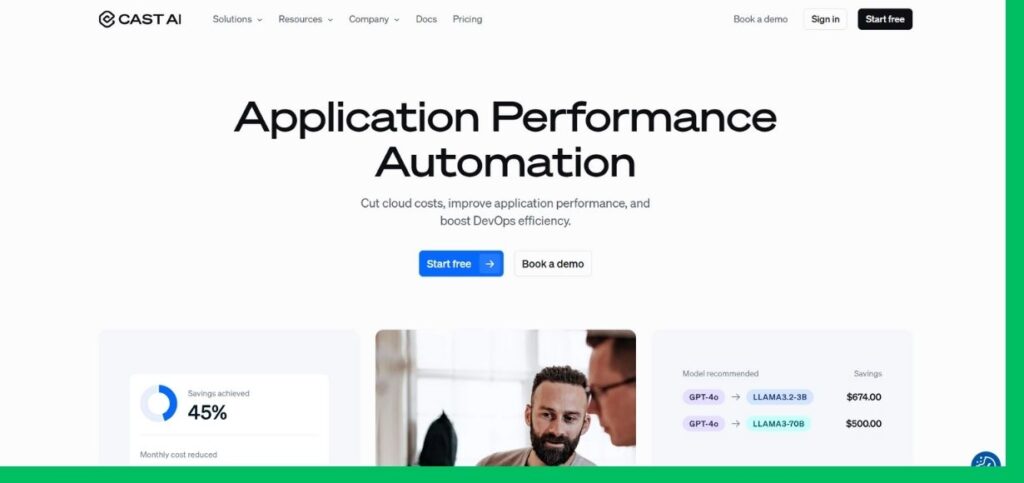
CAST AI automates AWS, GCP, and Azure cloud spend on Kubernetes in real-time. CAST AI real-time monitoring of the cluster eliminates over-provisioning, brings autoscaling, and uses the lowest-cost compute resource. CAST AI offers real-time decision-making with actionable recommendations and reports of savings. Cast AI one-click deployment with Kubernetes decreases infrastructure complexity and optimizes resource use. Suits devops teams and SaaS companies, CAST AI maintains uptime and performance and saves cloud expenses by a high percentage through intelligent automation.
Key Features:
- Auto-scaling
- Cost estimation
- Spot instance optimization
- Security insights
Pros:
- Kubernetes focused
- Strong automation
Cons:
- Narrow use case
- Requires setup
Pricing:
Free tier + paid
Who Should Use It:
DevOps and engineering teams using K8s
12. CloudZero
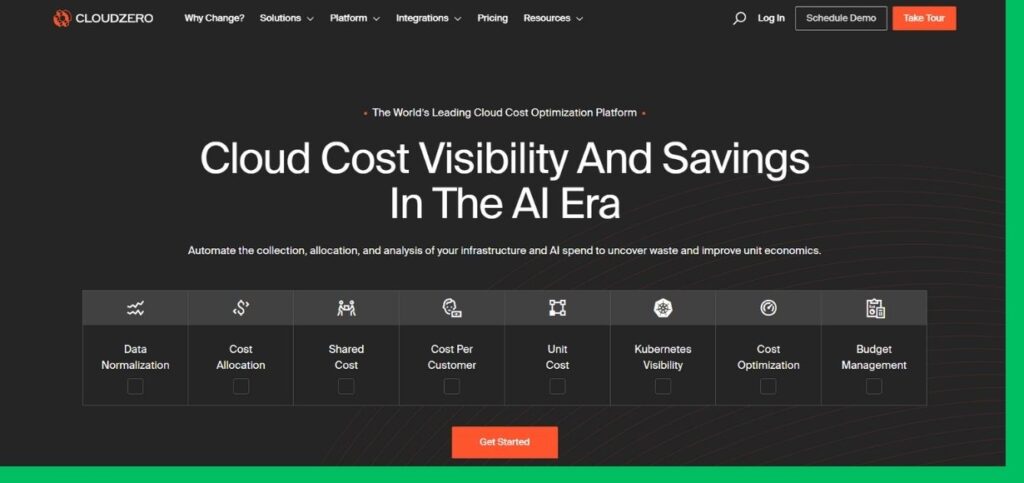
CloudZero offers engineering teams visibility of cloud costs in real time. It offers detailed cost by feature, customer, and environment visibility that allows teams to connect cloud consumption to business results. CloudZero is supported in AWS and other cloud-native environments and features custom dashboards, budgeting alerting, and anomaly detection. It is different from other finance software in that it bridges the engineering to FinOps gap. It’s ideal for SaaS companies looking for unit cost efficiency and cloud-native companies that want to scale responsibly without compromising cost discipline.
Key Features:
- Cost per feature
- Team-level insights
- Custom dimensions
- Integrates with AWS, Snowflake
Pros:
- Developer-friendly
- Focused on features
Cons:
- AWS-centric
- Requires tagging discipline
Pricing:
Custom
Who Should Use It:
Engineering and product teams
13. Densify
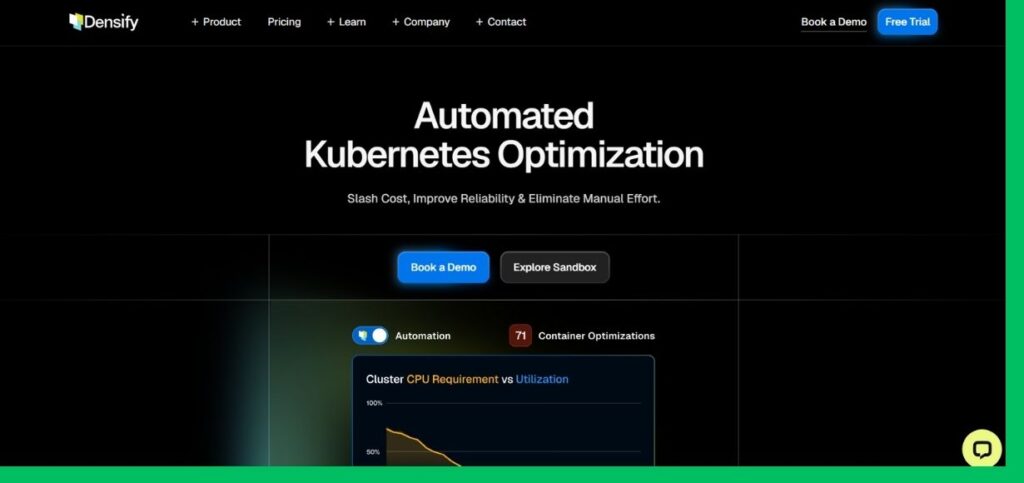
Densify is an intelligent cloud optimization platform utilizing machine learning to dynamically analyze workloads and automatically recommend the ideal resources. It supports AWS, Azure, GCP, and on-premises environments. Densify offers deep insight into app demands, enabling proper resource matching and waste reduction. It also maximizes reserved instance usage and discovers the best storage and compute types. With performance and cost alignment in mind, Densify is ideally suited for enterprise IT teams seeking ongoing, automated optimization of dynamic cloud infrastructure.
Key Features:
- Smart instance recommendations
- Capacity planning
- Policy-driven automation
- Performance analytics
Pros:
- Strong ML support
- Focused on optimization
Cons:
- High learning curve
- Premium pricing
Pricing:
Custom
Who Should Use It:
Enterprises focused on data science and automation
14. Zesty
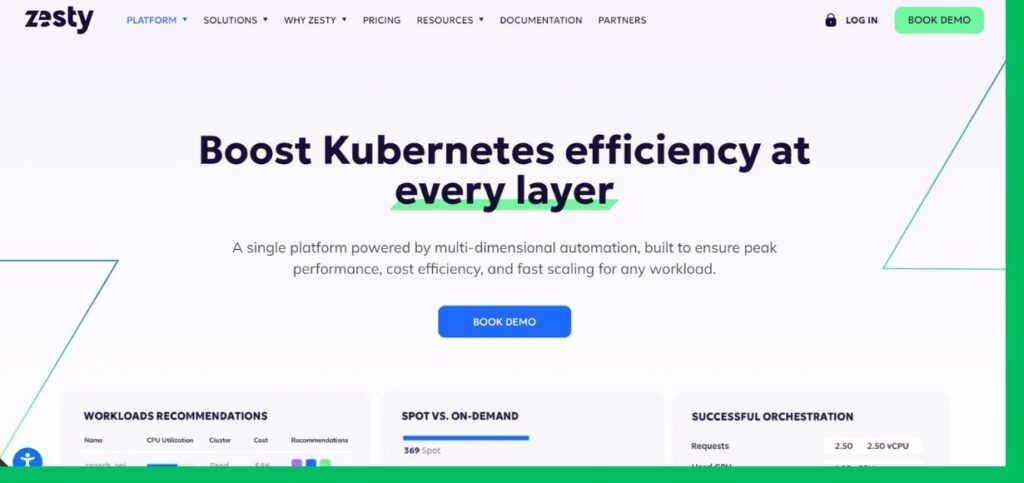
Zesty provides an automated solution to AWS cloud cost management using dynamic allocation and commitment management. It dynamically buys and sells Reserved Instances based on current usage, yielding maximum savings without any manual intervention. Zesty tools also facilitate auto-scaling of storage and computing, minimizing waste. Intended for companies seeking to reduce AWS bills with minimal overhead, Zesty is suitable for rapidly growing startups and established businesses. Its hands-free product provides ongoing cost savings with no risk or complexity.
Key Features:
- Auto-scaling volumes
- Commitment management
- Real-time usage insights
- Smart provisioning
Pros:
- AWS-native
- Easy to use
Cons:
- AWS only
- Limited customization
Pricing:
Based on usage
Who Should Use It:
SMBs on AWS
15. Economize

Economize is a cloud cost management software for startups and small teams. It simplifies cloud spend analysis on AWS, GCP, and Azure with simple-to-read dashboards, real-time alerts, and actionable recommendations. The users can monitor the consumption of resources, create budgets, and receive suggestions on savings without needing in-depth technical knowledge. Economize is ideal for teams that need an affordable solution with ease of use, without sacrificing visibility. With an emphasis on simplicity and value, it helps businesses maintain financial discipline while expanding their cloud infrastructure cost-effectively.
Key Features:
- Spend tracking
- Anomaly detection
Pros:
- Easy UI
- Good for startups
Cons:
- Fewer features
- Not suited for enterprise
Pricing:
Free tier + paid plans
Who Should Use It:
Startups and small tech teams
Conclusion
The right cloud cost management tool choice is a function of your cloud configuration, team size, and budget ambitions. AWS Cost Explorer and nOps are user-based, cloud-configuration-specific automation and intelligence tools. Azure Cost Management and Google Cloud Billing Reports are excellent native clouds. Multi-cloud visibility companies would consider CloudHealth or Apptio Cloudability.
Kubernetes teams will fall in love with Kubecost or CAST AI for full-stack cost tracking. Startups and small companies will adore Economize is simple and easy. Spot by NetApp and Zesty are the best for optimization driven by automation. As a FinOps expert, DevOps engineer, or startup founder, these solutions align cloud spending with business outcomes, offering greater visibility, control, and efficiency on your cloud journey.
FAQs
1. What is a cloud cost management tool?
It’s a computer program that assists in tracking, analyzing, and maximizing expenditures on cloud platforms such as AWS, Azure, and GCP.
2. Are there free cloud cost management tools?
Yes. AWS Cost Explorer, Azure Cost Management, and Kubecost have free plans.
3. Can I use one tool for multiple cloud providers?
Yes. Tools such as CloudHealth, Apptio Cloudability, and CloudCheckr have multi-cloud support.
4. How are FinOps and DevOps tools different?
FinOps tools are finance-oriented (e.g., Cloudability), whereas DevOps tools are infrastructure usage-oriented (e.g., Spot, CAST AI).
5. Are technical skills required for these tools?
Some tools can be used by anyone, but some might need technical or DevOps skills to set up and configure.
Meta description
Explore the 15 best cloud cost management tools to monitor, control, and reduce spending across AWS, Azure, GCP, and more. Ideal for IT and FinOps teams.
